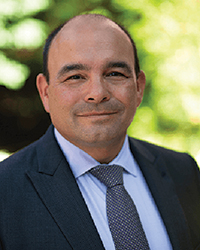
Capital markets outlook: More investment product available - by Chris Paszyc

The Boulos Co.
As we drop into the unknown of 2020, will the capital markets continue an impressive ten-year run, or will that unending flow of investor capital into commercial real estate (CRE) suddenly be turned off at the spigot? It is widely accepted that economic expansions end because of investor tolerance for risk, both real and perceived. Indicators of risk include growth moderating, credit tightening, earnings under pressure, and contradicting economic policy. All are factors weighing on investors in their decision to invest in CRE. As of this publication, the U.S. CRE market continues to experience energetic deal flow with increased lending activity. As we head into the 2020 presidential election year, however, the level of anxiety and uncertainty is increasing with every tweet both at home and abroad. US-China trade tensions, Brexit, economic deceleration abroad–the world is seeking stability and predictability in an environment that is anything but. The CRE sector is not immune to this paradox. Are these concerns warranted, or will the perception create a false narrative? More importantly, cutting through the hyperbole, where are the opportunities?
National Trends: The pricing of CRE investment properties has been steady across all asset types. This constancy is, in part, due to continued job growth and the rising costs of construction. Pricing stability has also been impacted by growing efficiencies in CRE, particularly in the retail and office sectors. Non-traditional property sectors such as student housing, manufactured housing, and self-storage facilities have seen the most price appreciation. Additionally, continued low-interest rates have increased lending activity across all asset types. Multiple outlets who track lending reported the volume of commercial and multifamily originations jumped significantly year-over-year. We have also seen the rise of non-bank lenders in this sphere. With extended interest-only (I/O) periods, high loan-to-values (LTV), extended amortization (±30 years), prepayment flexibility, forward rate-lock for longer periods, loosening underwriting, and “covenant-lite” loan docs, lenders have made refinancing or new acquisitions more appealing. Aggressive lending behavior, however, is one precursor to economic slowing. Recent indicators predicting a future rate increase also point to a slowing of capital markets activity. It should also be noted that 2019 saw the “inversion” of the bond yield curve, which has preceded every recession since 1955. There is a growing consensus that the commercial real estate market has peaked in the cycle and is now experiencing a deceleration. Given healthy CRE fundamentals and accelerating construction costs keeping the new supply in check, however, indications are we should experience a soft landing and perhaps stave off a recession altogether.
Local Trends: Traditionally, Maine has been a stable market, somewhat resistant to the volatility that the rest of the country experiences. Provided we see steady employment statistics, and capital is available, we expect continued strong demand for investment property statewide. While interest rates have decreased over 2019, cap rates were essentially unchanged in most markets and sectors. Substantial multifamily assets and single-tenanted buildings with “A” credit long-term leases continue to trade in the lowest cap rate range. Similar to 2018, long-term fixed debt and historically low rates have been available for investors all year. There also continues to be a steady mix of out-of-state capital and local buyers demanding product throughout the state of Maine. Experts predict a rising interest rate environment will eventually impact commercial real estate pricing, though we have yet to experience the shift.
The Boulos Co. facilitated $420 million in transactions on behalf of clients in 2019. Over $100 million of that volume represents investments. The office sector alone accounted for 61% of the total sale transaction volume at over $101 million. In conclusion, there will be more investment product available than in previous years to satisfy demand. We expect robust activity into the first and second quarter of 2020 as several investment properties are coming to market to capitalize on late-cycle market dynamics.
Chris Paszyc, CCIM, SIOR, is a partner/broker with The Boulos Company, Portland, ME